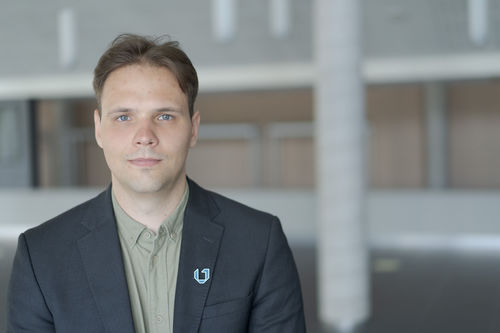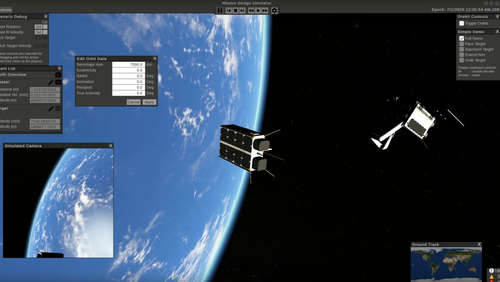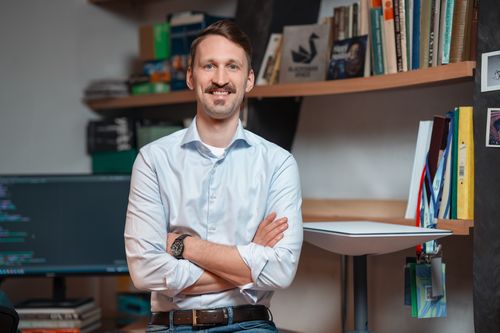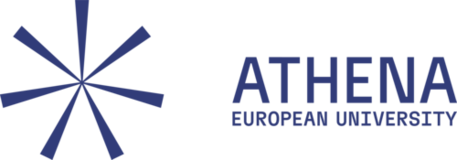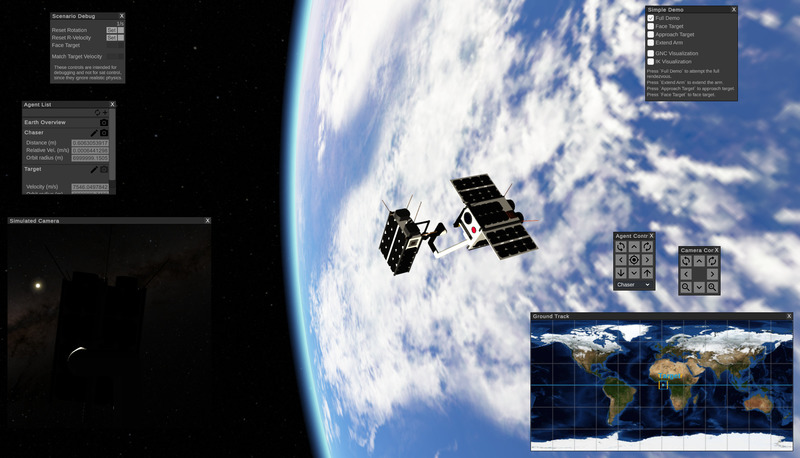
2025-08-04
AGAI Acquires Space Mission Simulation Software
The Antanas Gustaitis Aviation Institute (AGAI) at VILNIUS TECH has acquired space mission simulation software worth more than EUR 114,000. The software will enable students to model, simulate, and analyze satellite missions – from the initial design stages to launch preparation. According to aerospace experts, the tool will enhance students’ training, open up more opportunities for international collaboration, and strengthen the competitiveness of Lithuania’s space sector.
AGAI Vice-Dean Laurynas Šišovas explains that the new software will allow students to practically experience all key stages of creating a satellite mission – from orbit selection and trajectory planning to communication and power budget calculations.
“Students will learn to make engineering decisions in an environment that imitates real conditions, conduct mission analysis, and assess technological trade-offs. It is like a simulation space where virtual satellites can be created from scratch all the way to launch readiness,” he notes.
The software will be accessible to all students, but it will be most intensively used by students of the Bachelor’s program in Aviation Mechanics Engineering and the Master’s program in Aerospace Engineering.
“We expect students to use the program actively, both during study modules and while conducting research, as well as for course projects or final theses,” Šišovas adds.
Developed in Lithuania
The software acquired by VILNIUS TECH, called Mission Design Simulator (MDS Solaris), was developed by the Lithuanian space and defense technology company Blackswan Space. Tomas Malinauskas, the company’s Chief Commercial Officer, explains that development began in 2019 after receiving a contract from the European Space Agency (ESA) to create a simulation tool for space debris removal missions. Blackswan Space later expanded the tool to cover a broader range of space missions.
“This February, we introduced the first commercial version of the software to the market, and it is already being successfully used by space companies in the US and Europe,” he says.
According to Malinauskas, while similar software products exist on the market, MDS Solaris stands out for operating in real time.
“During simulations, we can change parameters and instantly see the results. We can also control swarms of satellites or individual satellites from different computers simultaneously. This feature works like a multiplayer mode, allowing the simulation of dual-use space missions where we can mimic the maneuvers of potential adversary satellites and train future space defense satellite operators,” he explains.
He emphasizes that the software is ideally suited not only for engineers designing space missions or satellites but also for lecturers and students who can use it to better understand orbital mechanics and the intricacies of satellite operations.
Preparing Students for the Global Market
Šišovas stresses that while theoretical knowledge remains a core part of AGAI studies, practical training – where students can tackle real satellite mission tasks – will significantly strengthen their expertise.
“This combination helps students better understand complex processes, for example, how orbit selection affects a satellite’s power budget or how communication windows depend on trajectory. Practical simulations reinforce theoretical concepts, develop engineering thinking, and prepare students to work in teams they will later join in the space sector,” says Šišovas.
The university also plans to use the software in international cooperation projects, particularly with partners of the PEGASUS network, which unites European universities training aeronautics specialists.
“We are planning joint courses with universities in France, Italy, and Sweden, where students from different countries will work together on satellite mission modeling. Such courses prepare students for global engineering projects where international collaboration is an integral part of daily work,” he adds.
Expanding the Space Ecosystem
The EUR 114,420 space mission simulation software was acquired under an EU-funded initiative aimed at strengthening innovation in the public sector. Eglė Elena Šataitė, Head of the Space Hub group at the Innovation Agency, which implements space policy in Lithuania, notes that this project directly supports the country’s space ecosystem development goals.
“The Lithuanian space sector development concept, adopted a few years ago, identified the challenge of properly preparing specialists for the space industry. By involving educational institutions in such projects, we not only address the goals set out in the national space strategy but also contribute to the growth of this relatively new yet highly promising sector,” says Šataitė.
She hopes that acquiring this software will help VILNIUS TECH students gain skills that will allow them to successfully enter the Lithuanian and European space sectors, develop new technologies, and foster internationalization. She adds that the project may also inspire other institutions to participate in future Innovation Agency initiatives aimed at the public sector.
Ambitions Require Investment
Šataitė reminds that since 2021, Lithuania has been a member of the European Space Agency and has been successfully developing niche technologies.
“Lithuanian technologies can strengthen national and European security and independence, open opportunities for cooperation with other ESA countries, and create new solutions for business, science, and society. We have strong human potential – by the number of STEM graduates, Lithuania ranks second in the EU. For Lithuania to take a more active role in ESA missions and contribute to EU goals, it is essential to steadily increase investments in the space sector, properly train specialists, and expand international partnerships,” she states.
Šišovas agrees, adding that Lithuania can already be called a space country.
“Lithuanian satellites are orbiting Earth, and young specialists are successfully joining ESA and private companies. Our goal is for the university to be a place where not only ideas are born but also engineering solutions are developed. We have strong foundations: we attract creative students, foster international connections, and have significant technological resources. The key now is to set ambitious goals and ensure practical training – which this software will help us achieve,” he emphasizes.
AGAI Vice-Dean Laurynas Šišovas explains that the new software will allow students to practically experience all key stages of creating a satellite mission – from orbit selection and trajectory planning to communication and power budget calculations.
“Students will learn to make engineering decisions in an environment that imitates real conditions, conduct mission analysis, and assess technological trade-offs. It is like a simulation space where virtual satellites can be created from scratch all the way to launch readiness,” he notes.
The software will be accessible to all students, but it will be most intensively used by students of the Bachelor’s program in Aviation Mechanics Engineering and the Master’s program in Aerospace Engineering.
“We expect students to use the program actively, both during study modules and while conducting research, as well as for course projects or final theses,” Šišovas adds.
Developed in Lithuania
The software acquired by VILNIUS TECH, called Mission Design Simulator (MDS Solaris), was developed by the Lithuanian space and defense technology company Blackswan Space. Tomas Malinauskas, the company’s Chief Commercial Officer, explains that development began in 2019 after receiving a contract from the European Space Agency (ESA) to create a simulation tool for space debris removal missions. Blackswan Space later expanded the tool to cover a broader range of space missions.
“This February, we introduced the first commercial version of the software to the market, and it is already being successfully used by space companies in the US and Europe,” he says.
According to Malinauskas, while similar software products exist on the market, MDS Solaris stands out for operating in real time.
“During simulations, we can change parameters and instantly see the results. We can also control swarms of satellites or individual satellites from different computers simultaneously. This feature works like a multiplayer mode, allowing the simulation of dual-use space missions where we can mimic the maneuvers of potential adversary satellites and train future space defense satellite operators,” he explains.
He emphasizes that the software is ideally suited not only for engineers designing space missions or satellites but also for lecturers and students who can use it to better understand orbital mechanics and the intricacies of satellite operations.
Preparing Students for the Global Market
Šišovas stresses that while theoretical knowledge remains a core part of AGAI studies, practical training – where students can tackle real satellite mission tasks – will significantly strengthen their expertise.
“This combination helps students better understand complex processes, for example, how orbit selection affects a satellite’s power budget or how communication windows depend on trajectory. Practical simulations reinforce theoretical concepts, develop engineering thinking, and prepare students to work in teams they will later join in the space sector,” says Šišovas.
The university also plans to use the software in international cooperation projects, particularly with partners of the PEGASUS network, which unites European universities training aeronautics specialists.
“We are planning joint courses with universities in France, Italy, and Sweden, where students from different countries will work together on satellite mission modeling. Such courses prepare students for global engineering projects where international collaboration is an integral part of daily work,” he adds.
Expanding the Space Ecosystem
The EUR 114,420 space mission simulation software was acquired under an EU-funded initiative aimed at strengthening innovation in the public sector. Eglė Elena Šataitė, Head of the Space Hub group at the Innovation Agency, which implements space policy in Lithuania, notes that this project directly supports the country’s space ecosystem development goals.
“The Lithuanian space sector development concept, adopted a few years ago, identified the challenge of properly preparing specialists for the space industry. By involving educational institutions in such projects, we not only address the goals set out in the national space strategy but also contribute to the growth of this relatively new yet highly promising sector,” says Šataitė.
She hopes that acquiring this software will help VILNIUS TECH students gain skills that will allow them to successfully enter the Lithuanian and European space sectors, develop new technologies, and foster internationalization. She adds that the project may also inspire other institutions to participate in future Innovation Agency initiatives aimed at the public sector.
Ambitions Require Investment
Šataitė reminds that since 2021, Lithuania has been a member of the European Space Agency and has been successfully developing niche technologies.
“Lithuanian technologies can strengthen national and European security and independence, open opportunities for cooperation with other ESA countries, and create new solutions for business, science, and society. We have strong human potential – by the number of STEM graduates, Lithuania ranks second in the EU. For Lithuania to take a more active role in ESA missions and contribute to EU goals, it is essential to steadily increase investments in the space sector, properly train specialists, and expand international partnerships,” she states.
Šišovas agrees, adding that Lithuania can already be called a space country.
“Lithuanian satellites are orbiting Earth, and young specialists are successfully joining ESA and private companies. Our goal is for the university to be a place where not only ideas are born but also engineering solutions are developed. We have strong foundations: we attract creative students, foster international connections, and have significant technological resources. The key now is to set ambitious goals and ensure practical training – which this software will help us achieve,” he emphasizes.
-
- Page administrators:
- Monika Daukintytė
- Monika Daukintytė
- Ugnė Daraškevičiūtė













